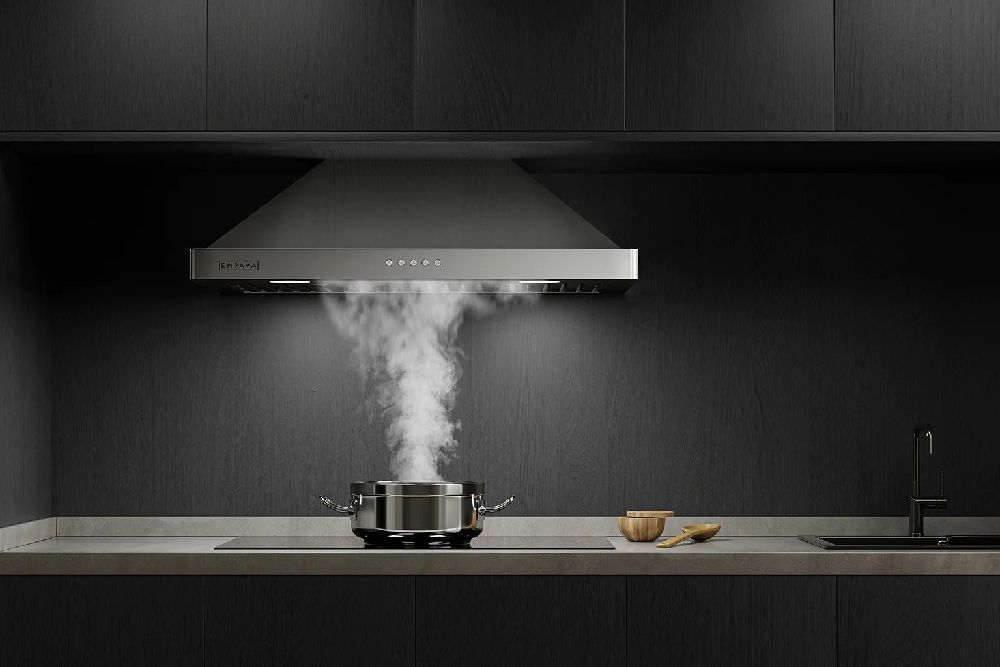I understand how vital a well-ventilated kitchen is for a pleasant cooking experience. That's why today, I'm diving into a crucial aspect of kitchen ventilation: calculating the CFM (Cubic Feet per Minute) for your range hood. This calculation ensures your kitchen remains smoke-free and fresh, no matter what's cooking.

Step 1: Understanding Your Kitchen's Size
Start by measuring your kitchen's dimensions - length, width, and height - to determine the total volume. Multiply these three figures to get the volume in cubic feet.
Kitchen Size Calculation
Length (feet) | Width (feet) | Height (feet) | Total Volume (cubic feet) |
Example: 12 | Example: 10 | Example: 8 | 960 |
Step 2: Factoring in the Heat Source
Now, consider your stove type. For gas stoves, you generally need 100 CFM per 10,000 BTUs (British Thermal Units). For electric stoves, 100 CFM per 10 inches of stove width is a good rule of thumb.
CFM Calculation Based on Stove Type
Stove Type | Measurement | CFM Requirement |
Gas | Per 10,000 BTUs | 100 CFM |
Step 3: Combining the Factors
Combine the kitchen size and stove type factors. The higher of the two values is your ideal CFM rating for a range hood.
For the latest standards and recommendations, it's wise to consult authority sites like Energy Star or Home Ventilating Institute. They provide updated guidelines and insights into the best practices for kitchen ventilation.
Conclusion
In conclusion, calculating the right CFM for your range hood isn't just about numbers; it's about ensuring a healthy, comfortable cooking environment. By following these steps, you'll be well on your way to a smoke-free, odor-free kitchen. Happy cooking!
You Might Also Like: How Do I Know If My Pressure Sensor Is Bad?








